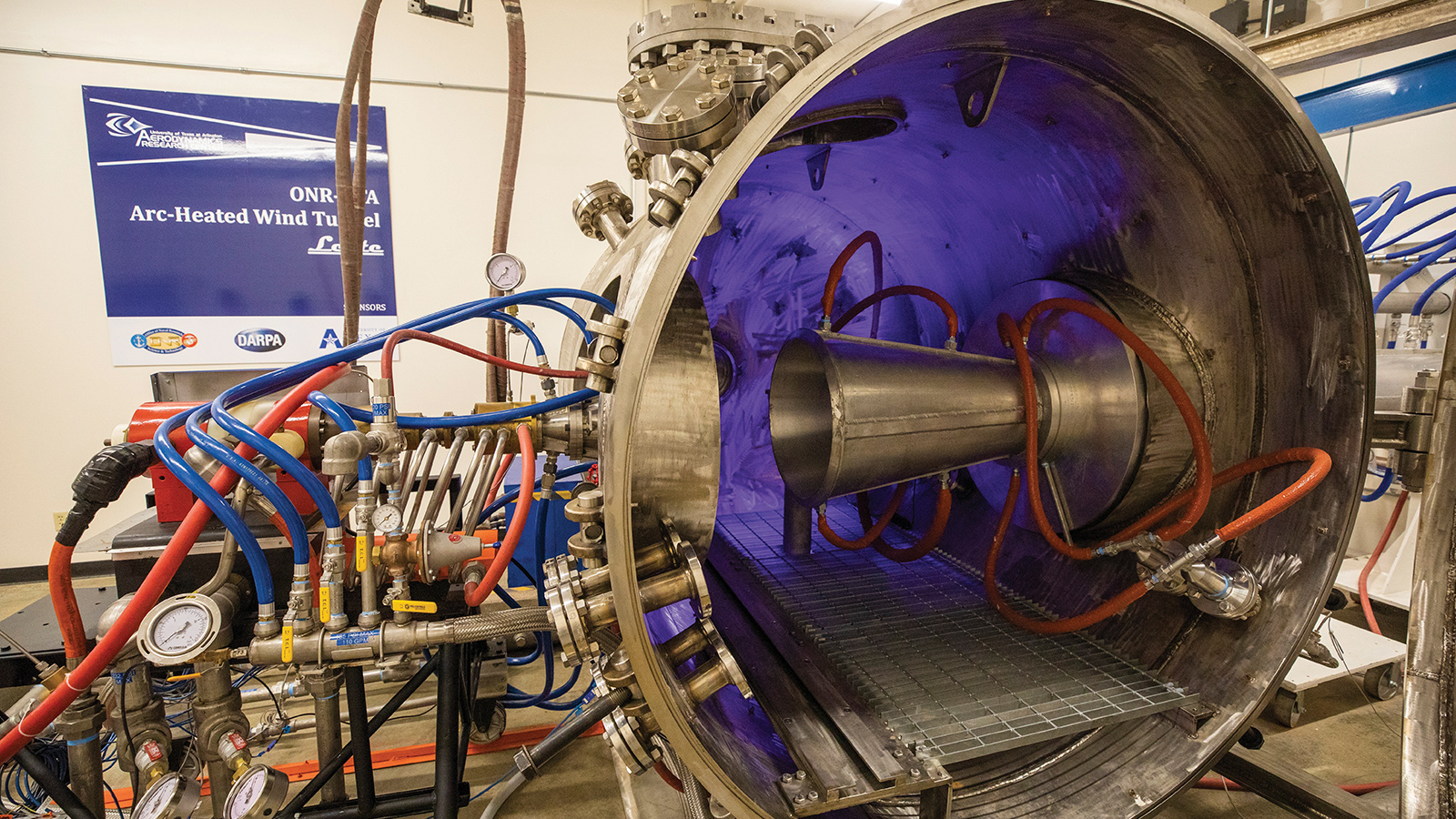Stay Up to Date
Submit your email address to receive the latest industry and Aerospace America news.
The Hypersonic Technologies and Aerospace Planes Technical Committee works to expand the hypersonic knowledge base and promote continued hypersonic technology progress through ground and flight testing.
The Hypersonic Technologies and Aerospace Planes Technical Committee works to expand the hypersonic knowledge base and promote continued hypersonic technology progress through ground and flight testing.
The U.S. Defense Department research enterprise continued to mature hypersonic technologies and concepts through a series of programs executed from within the Office of the Secretary of Defense and in the service branches, consistent with the National Defense Strategy and the hypersonic modernization priority of the Office of the Under Secretary of Defense for Research and Engineering.
The X-60A, a planned, above-Mach 5 test platform, passed its critical design review in January, clearing the way for fabrication. Generation Orbit Launch Services Inc. is building the X-60A under contract to the U.S. Air Force Research Laboratory’s Aerospace Systems Directorate, High Speed Systems Division.
In the civil area, Boeing continued to make progress maturing the design of the hypersonic passenger airplane and propulsion system it revealed in June 2018. Progress was also made toward maturing enabling technologies, such as advanced titanium and composite structures, and elements of an integrated propulsion/thermal management/power system.
Hermeus Corp., the Atlanta hypersonics startup, in June began testing the prototype turbine-based combined cycle propulsion system for its proposed Mach 5 passenger aircraft.
The University of Arizona completed a 15-inch (38-centimeter) diameter Mach 5 Ludwieg tube to facilitate basic and applied research at the test and evaluation scale in August.
In June, the Aerodynamics Research Center of the University of Texas at Arlington brought its newly developed ONR-UTA arc-heated wind tunnel “Leste” online. It is equipped with an arc heater producing nominal bulk enthalpies ranging from 1 to 10 MJ/kg at pressures up to 8 atmospheres. The facility is designed to operate with M=2, 4 and 6 nozzle inserts. The M=6 nozzle has an exit diameter of 23 cm.
In Europe, HEXAFLY-INT, short for High-Speed Experimental Fly Vehicles-International project, continued to foster international cooperation in civil high-speed air transport research. HEXAFLY-INT, coordinated by ESA-ESTEC, is supported by the European Union within the 7th Framework Programme Theme 7 Transport. This year, the German Aerospace Center, DLR, completed experimental studies in its High Enthalpy Shock Tunnel Göttingen on the natural boundary layer transition and the effects of surface imperfections such as steps and gaps on the boundary layer of the HEXAFLY-INT hypersonic glider. The 1:2.6 scaled model of the hypersonic glider was tested at Reynolds numbers and Mach numbers that replicated the flight conditions along a section of the HEXAFLY-INT flight trajectory.
Turning to Asia, the Japan Aerospace Exploration Agency in April finished building a subscale hypersonic engine and flight experimental aircraft called HIMICO, short for High-Mach Integrated Control Experiment. Propulsion and wind tunnel testing is scheduled at Mach 4 in 2020. The combustion efficiency and heat shield capability of the subscale hypersonic engine was evaluated in September by a direct-connect experiment at the University of Tokyo.
This year in India, the country’s first flight test of a scramjet powered hypersonic technology demonstrator occurred.
In China, a Mach 10 hypersonic glide vehicle was flown in June, launched from a Dongfeng-17 ballistic missile, as reported by the China Aerospace Science and Technology Corp. Also, according to the U.S.-based National Defense magazine, the State Key Laboratory continued efforts to complete its higher-speed detonation-driven hypervelocity tunnel for flows as fast as 12 km/s and Mach 25 with accurate densities, heating surfaces of models with spans as large as 3 meters up to approximately 7,700 degrees Celsius. In April, Xiamen University and the Space Transportation Co. launched a dual waverider design with 3D inward-turning inlets to prove the Xiamen Turbine Ejector-Ramjet combined cycle engine which operates from Mach 0 to 6.
Spaceplanes and hypersonic civil transport systems are being developed by countries across the globe.
Contributors: Kevin Bowcutt, Jagadeesh Gopalan, Barry Hellman, Jesse Little, Luca Maddelena, Masataka Maita, A.J. Piplica, Hideyuki Taguchi, Alexander Wagner and Michael White
Stay Up to Date
Submit your email address to receive the latest industry and Aerospace America news.




